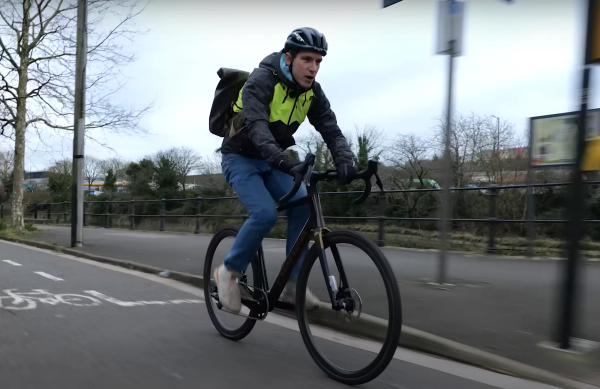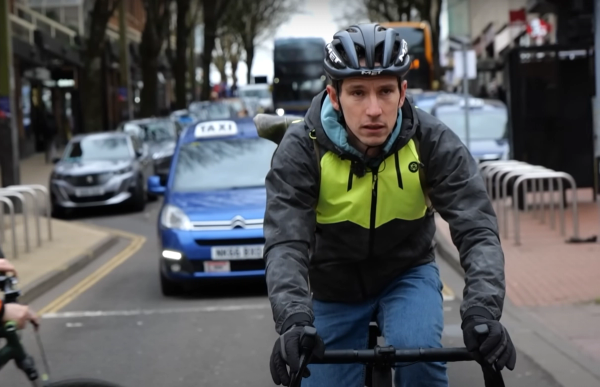Stronger legs without the gym: How to build strength on the bike
Tips and tricks for building your leg muscles and getting the benefits of gym work without having to compromise your riding time
Patrick Fletcher
Deputy Editor
Strong legs: that’s what we all want, right? Simply put, they make you faster.
It might seem obvious that more strength = more speed, but when you compare the bulky stars of track cycling with the skinny mountain climbers, there is a spectrum for the many varieties of cyclist legs.
The track cyclists and sprinters will try to hone the ‘fast-twitch’ muscle fibres that allow them to put out high power in short bursts, whereas most road racers will be oriented around endurance, with less of a focus on muscle mass.
Read more: Strength training for cyclists: is it worth it?
Still, all good cyclists require a degree of all-round leg strength. Whatever type of cycling you do, it helps to have a bit of extra leg muscle. Think of it as having an extra gear; it’s going to make cycling a lot easier and a lot more enjoyable.
For most riders, strength training takes place in the gym, but what if that didn’t have to be the case? Many of us hardly have enough time to ride our bikes as it is, so do we really want to give up that precious time to be in the gym, when we could be out riding our bikes?
There is hope, here, with research suggesting that even the world’s top pros don’t need gym-based strength training. Scientists for the Scandinavian Journal of Medicine & Science in Sports studied three riders who recorded top-five finishes at the Giro d’Italia in recent years, and they all neglected to do specific strength training, against the wishes of their coaches. It’s unknown how they might have performed if the had done so, but still, top-five at the Giro is hardly a bad result, is it?
So with that, GCN’s Manon Lloyd and James Lowsley-Williams take a look at how you can do some specific leg workouts while on the bike, incorporating the benefits of gym work without having to compromise on your riding time.
Over-geared efforts
Using a huge gear and a low cadence can help build your raw power and those fast-twitch muscle fibres.
Find a hill or do an effort in a significantly bigger gear than you normally would. If you do this for any length of time, you’re going to feel a serious burning in your legs, similar to the burn you’d feel if you’d gone to the gym.
Read more: Is a fixed gear bike a good training tool?
Short efforts
Just as some weightlifters focus on lower reps of bigger weights, others look for higher rep counts of lower weights. The same can work for cyclists. You can do short efforts in quite a light gear. These aren’t heavily-geared, so in a nice light gear you want to give your maximum effort, then you want to roll along nice and easy, recoverer, and repeat that effort, much like you do in the gym.
Building workouts into your ride
If you’re out riding with a friend, why not make it competitive and throw in some 10-second sprints every now and again, setting a traffic sign or another marker as your finish line. Another good one is to see who can get up to speed quickest from a standing start at the traffic lights.
James recommends climbs that go up in sections, and going super deep in the steep parts and recovering on the shallow sections. “The key here,” he says, “is to try to engage all your muscle groups, and work hard on pushing the pedals. What you’re not trying to do here is get your PB on the climb.”
Manon, meanwhile, says that a rolling route is the perfect opportunity to build strength, challenging you to keep it in the big ring. You take your speed from the faster sections and then give it a dig on the inclines, to really power through them. “It actually feels quite good sprinting up these climbs,” she says. “Much better than putting it in the little ring and tootling up.”
In or out of saddle?
A key question is whether these efforts should be done in or out of the saddle. And while big-gear efforts may force you up, it’s important to take the approach of completing these exercises in the position you’d usually adopt when riding normally.
Some of us prefer to ride out of the saddle for extended periods of time, whereas others, perhaps those with more of a track background, barely even leave their saddle. There has even been some research evidence to suggest that jumping in and out of the saddle can actually confuse your muscles.
If you want this training to benefit you when you’re on the limit, then you want to try and do this in your normal riding position.
For more guides and information about all types of training, head to our dedicated training and fitness sections.

.jpg?rect=957,780,3097,3060&w=600&auto=format)









